Serial Direct Cable Connection, DB9, DB25, COM Ports and Pinouts
This article covers the popular serial ports on workstations, servers and laptop computers. We cover serial data transfer, port pinouts, port speeds, serial interface types (DB9 & DB25), null modem cables and much more.
The Serial Direct Connection is the one which utilizes the COM ports of your computers. Every computer has at least two COM ports, COM1 and COM2. The "COM" stands for "Communications". Its pinouts are a lot simpler when compared to the parallel port, but the speed is also a lot slower.
To give you an idea of how fast (or slow) a serial port is, at its best you will get around 12 to 14 KB per second. That's pretty slow when you're used to a network connection, but let me show you how serial data is transferred so you can also understand why it's a lot slower:
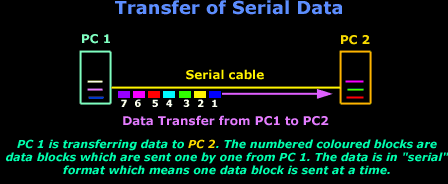
Figure 1. Transfer of data via serial port
The above picture gives you an idea on how serial data is transferred. Each colored block that is numbered is sent from PC 1 to PC 2. PC 2 will receive the data in the same order it was sent, in other words it will receive data block 1 first and then 2, all the way to block 7. This is a pretty good representation of data flow in a serial cable. Serial ports transmit data sequentially over one pair of wires (the rest of the wires are used to control the transfer).
Another way you can think of it is like a one lane road where the road is wide enough to only fit one car at a time (one data block at a time in our example above) so you would imagine that the road cannot process several cars at one time.
The Serial Port
Most new computers have two COM ports with 9 pins each; these are DB-9 male connectors. Older computers would have one DB-9 male connector and one DB-25 male connector. The 25 pin male connector is pretty much the same as the 9 pin, it's just bigger.
Let's have a look at a serial port to see what we are talking about:

Figure 2. Physical Serial interface - DB-9 (usually COM1) and DB-25 (usually COM2)
Different pinouts are used for the DB-9 and DB-25 connectors and we will have a look at them in a moment. Let's just have another quick look at the COM ports of a new computer:
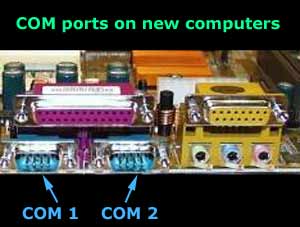
Figure 3. Serial ports (COM1 & COM2)
Notice the COM ports, they are both DB-9 connectors, there is no more DB-25! The connector above the two blue COM ports is an LPT or Parallel port.
The serial port of a computer is able to run at different speeds, thus allowing us to connect different devices which communicate at different speeds with the computer. The following table shows the speeds at which most computers' serial ports are able to run and how many KB/sec they translate to:
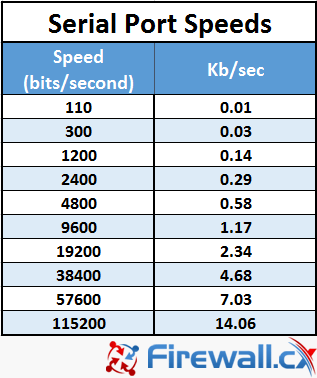
Figure 4. Serial port speeds (bits/second) and data transfer speeds
Now we will have a look at the pinouts of both DB-9 and DB-25 connectors:
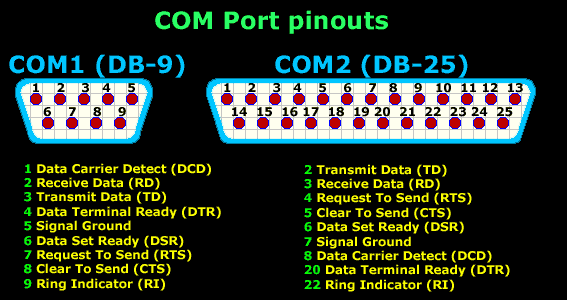
Figure 5. Serial COM port pinouts for both DB-9 & DB-25 serial interfaces
Serial Data Transfer Cable
All that's left now is the pinouts required to allow us to use the serial cable for direct connection. There is a special term for this type of a cable, its call a "null modem" cable, which basically means you need to have TX and RX crossed over. Because you can have different configurations, e.g. DB-9 to DB-9, DB-9 to DB-25, and DB-25 to DB-25, I have created different tables to show you the pinouts for each one:
1) DB-9 to DB-9. You use this configuration when you need a cable with a DB-9 connector on each end:
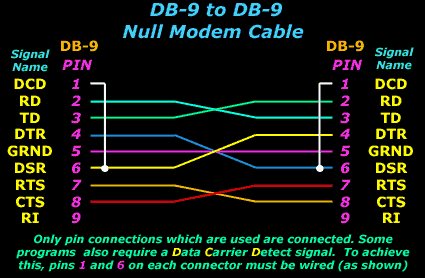
Figure 6. DB-9 to DB-9 Null Modem (serial) Cable
2) DB-9 to DB-25. You use this configuration when you need a cable with one DB-9 and one DB-25 connector on either end:
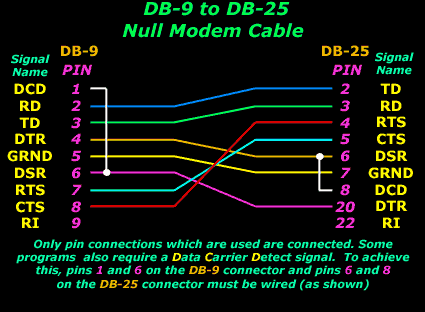
Figure 7. DB-9 to DB-25 Null Modem (serial) Cable
3) DB-25 to DB-25. You use this configuration when you need a cable with a DB-25 connector on each end:
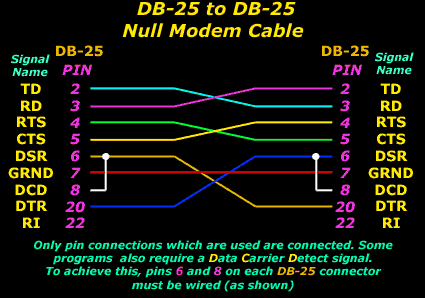
Figure 8. DB-25 to DB-25 Null Modem (serial) Cable
Well, that pretty much covers everything about serial direct connection via a null modem cable.
If you're using third party software to connect your computers, you probably won't stumble into big problems, but if you're using Windows software be sure you have unique names for each of your computers because Windows will treat the direct connection as a "network" connection. This means you will be able to see the other computer via Network Neighborhood.
Next - LPT Ports - Parallel Direct Cable Connection and pinouts or Back to Network Cabling Section
Wi-Fi Key Generator
Follow Firewall.cx
Cisco Password Crack
Decrypt Cisco Type-7 Passwords on the fly!














